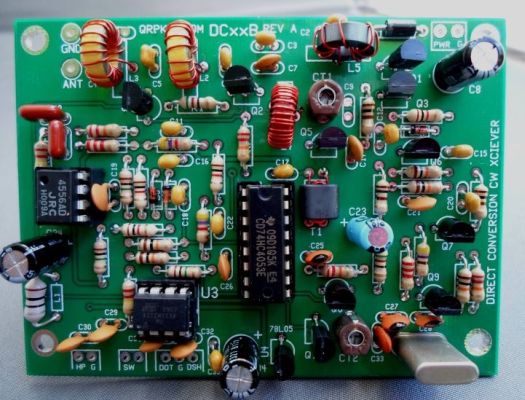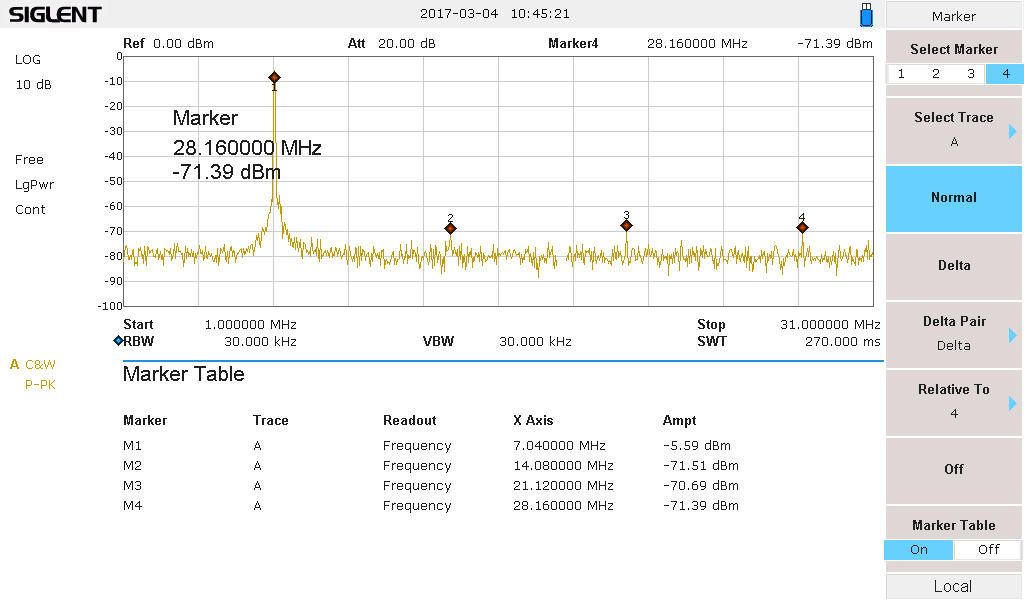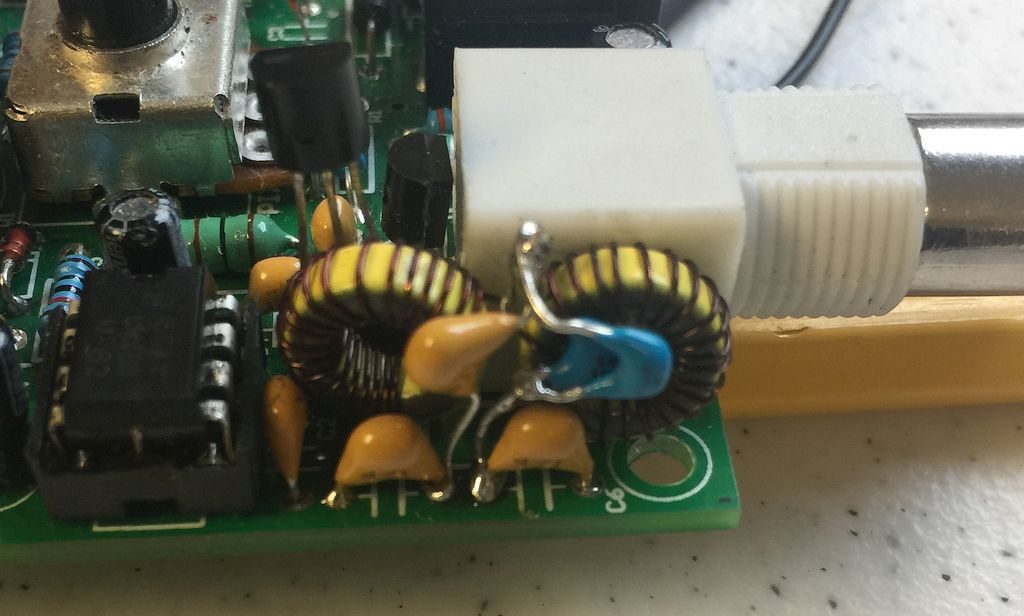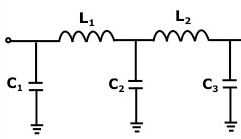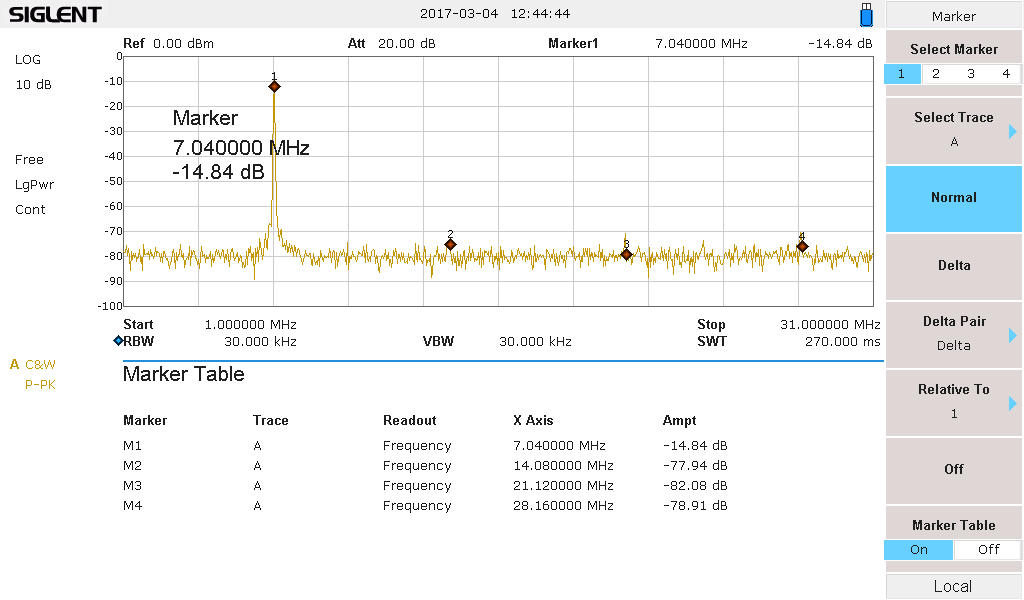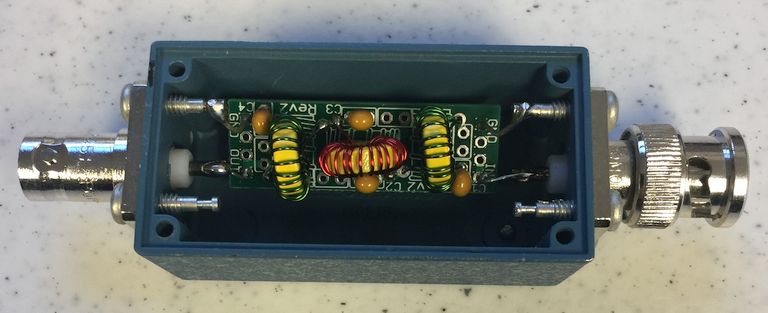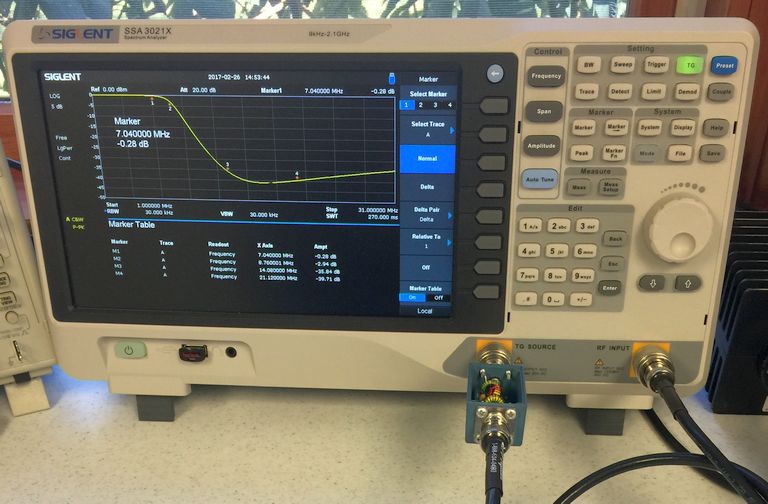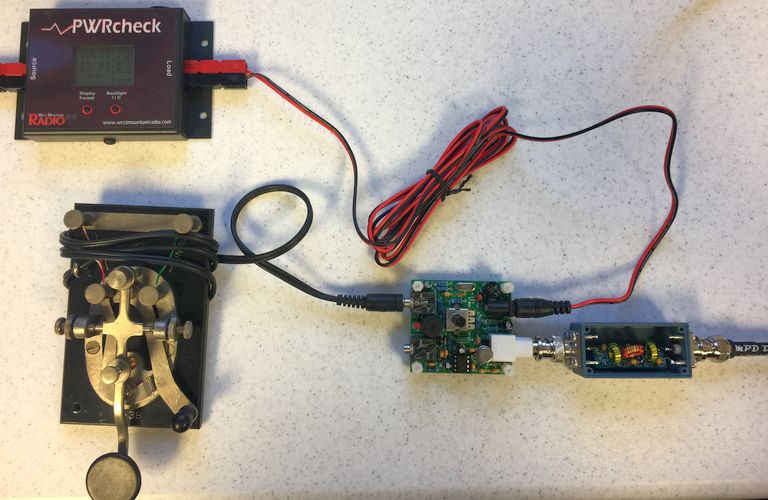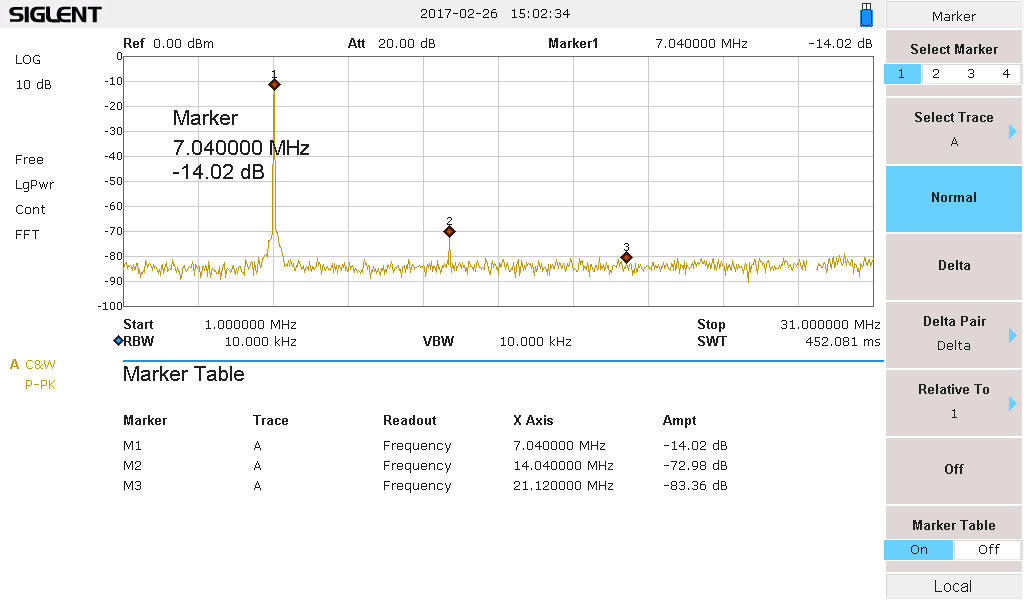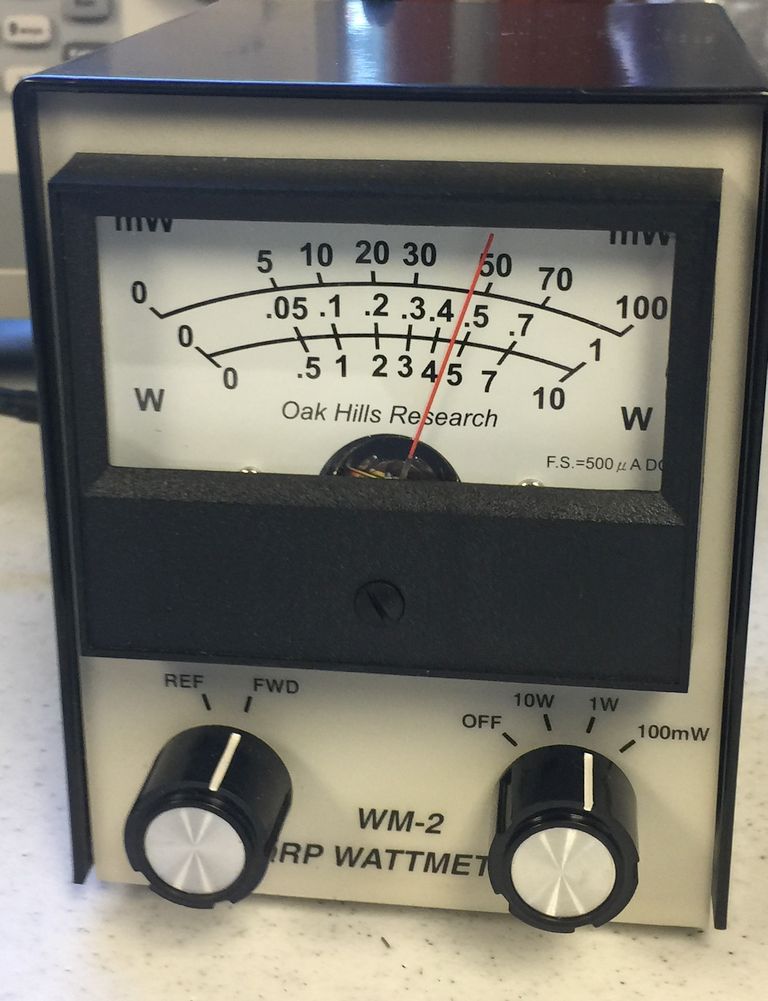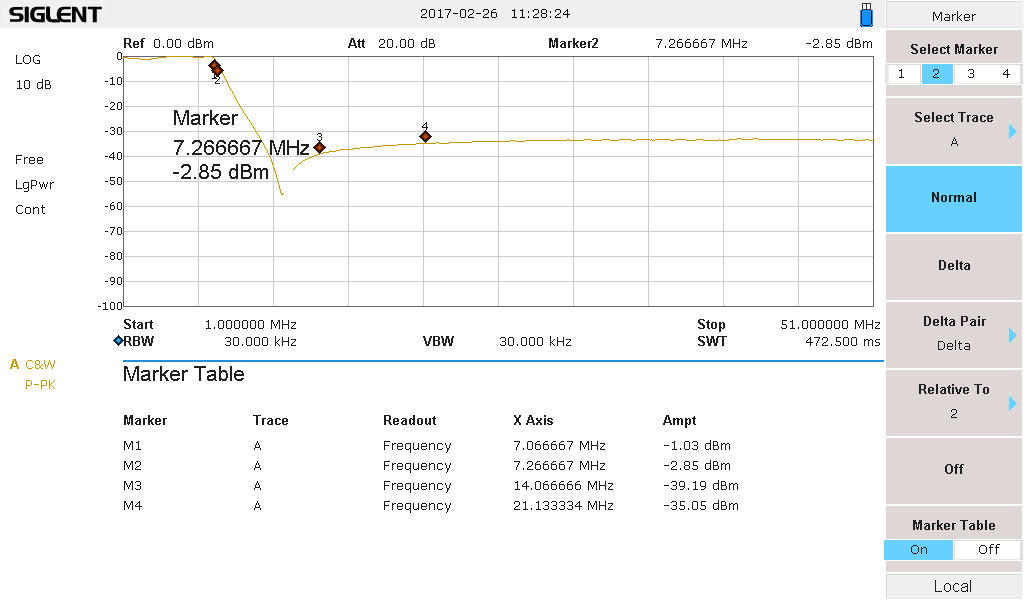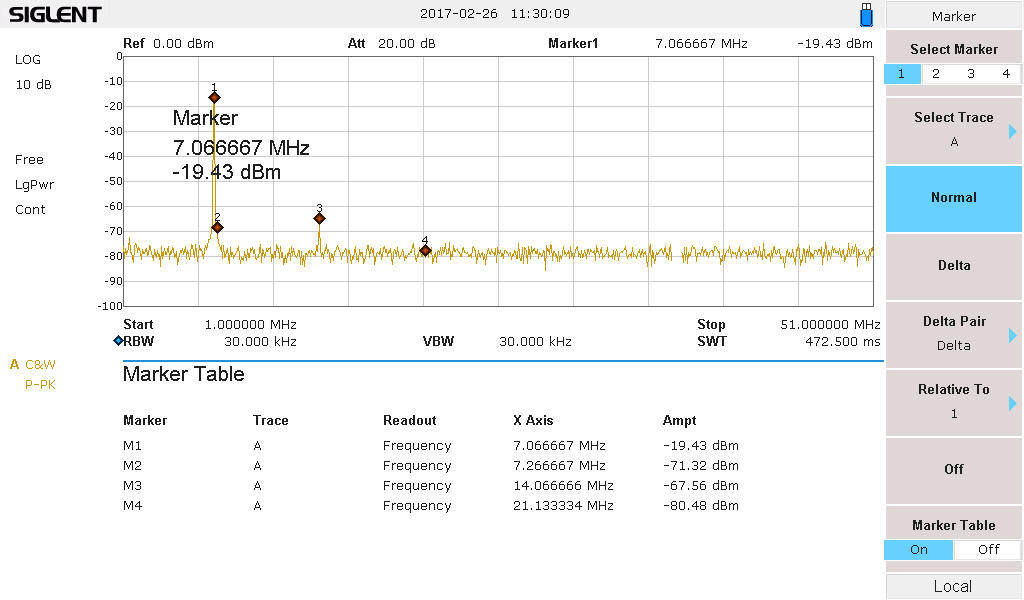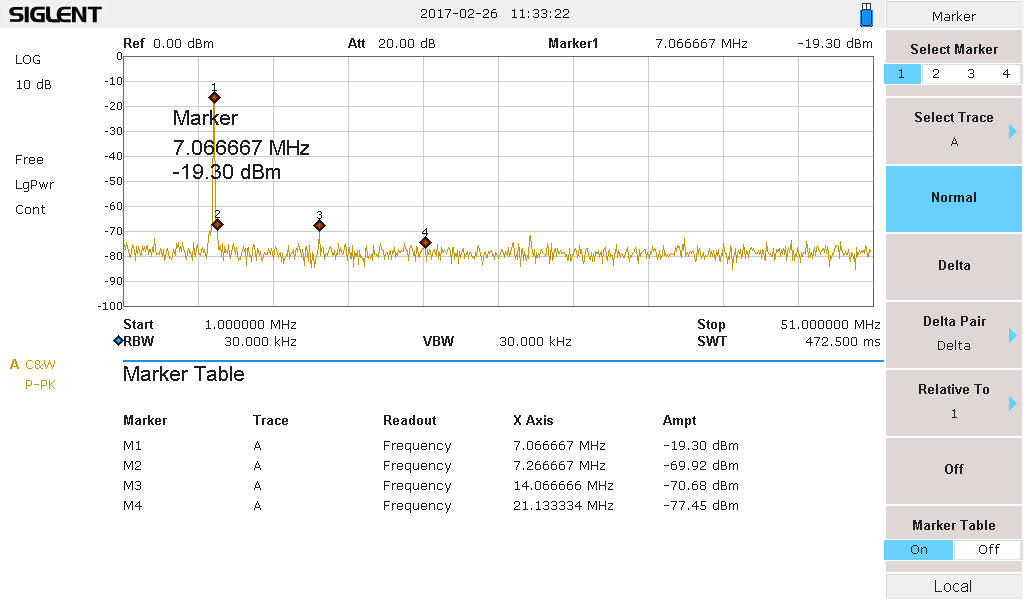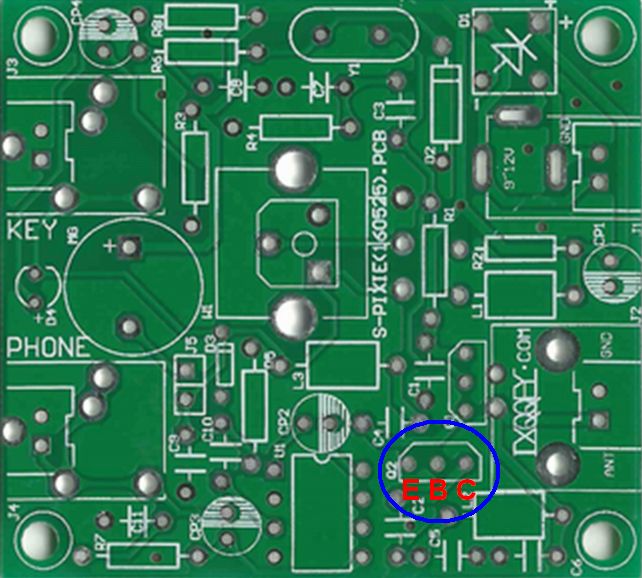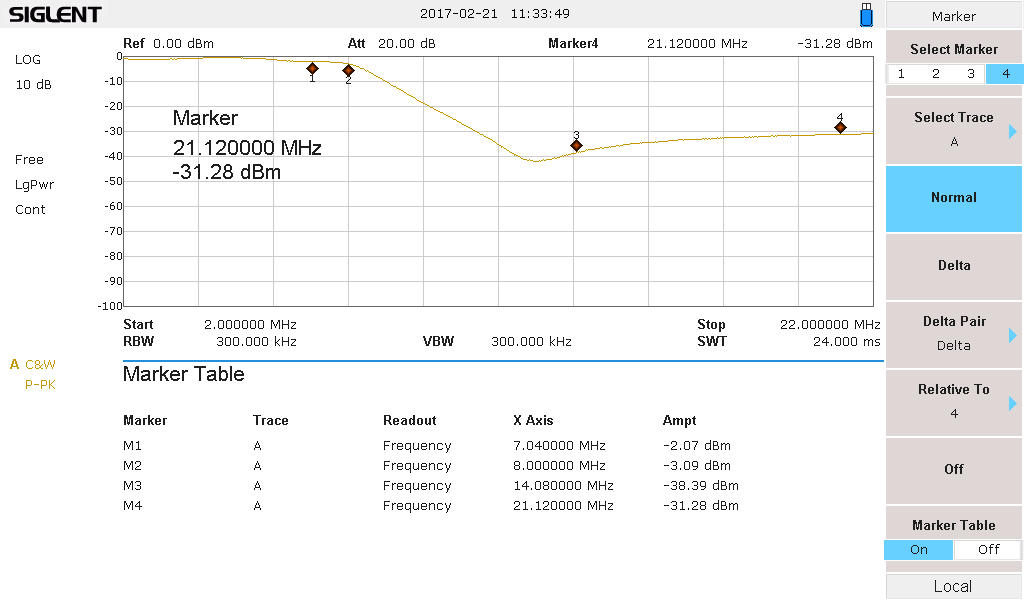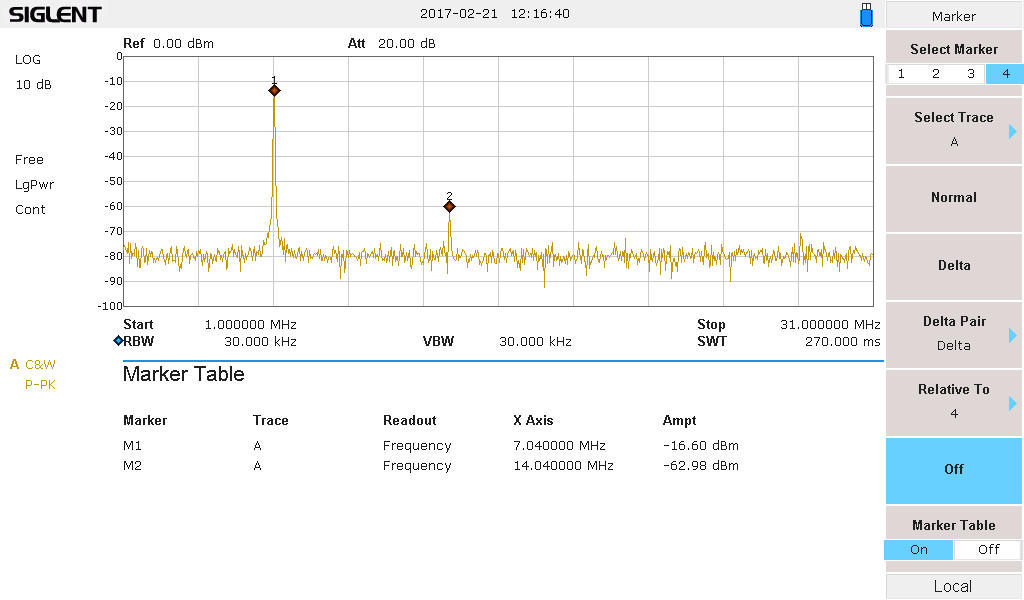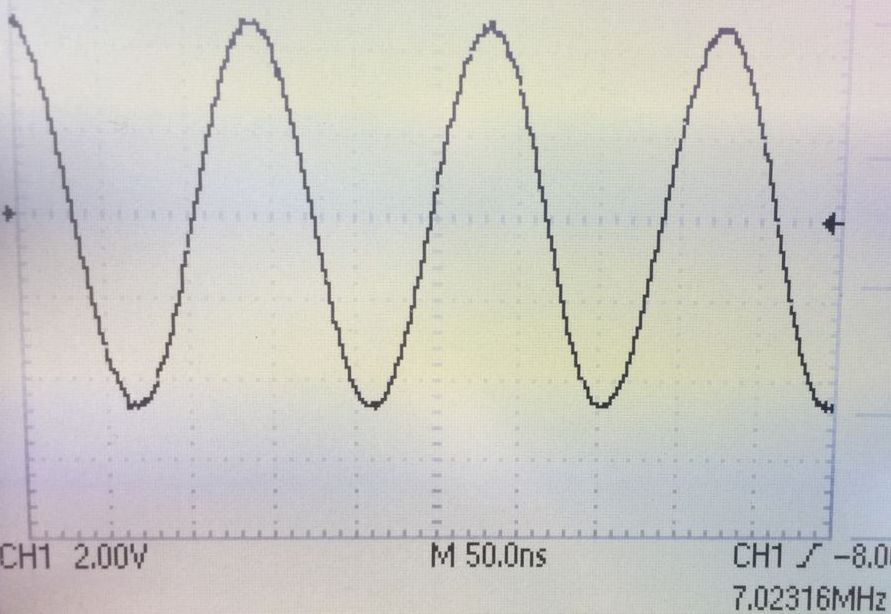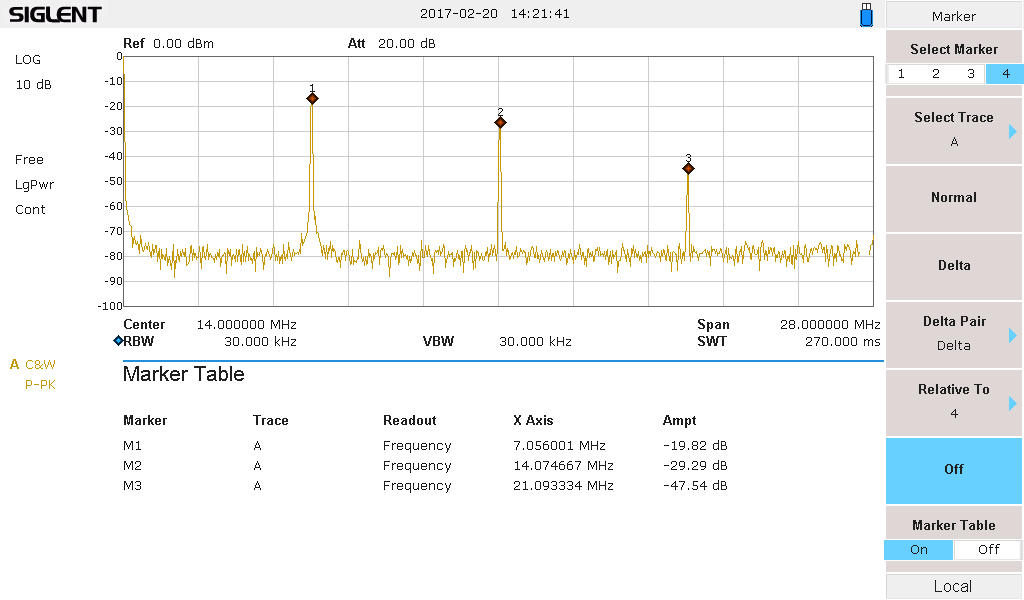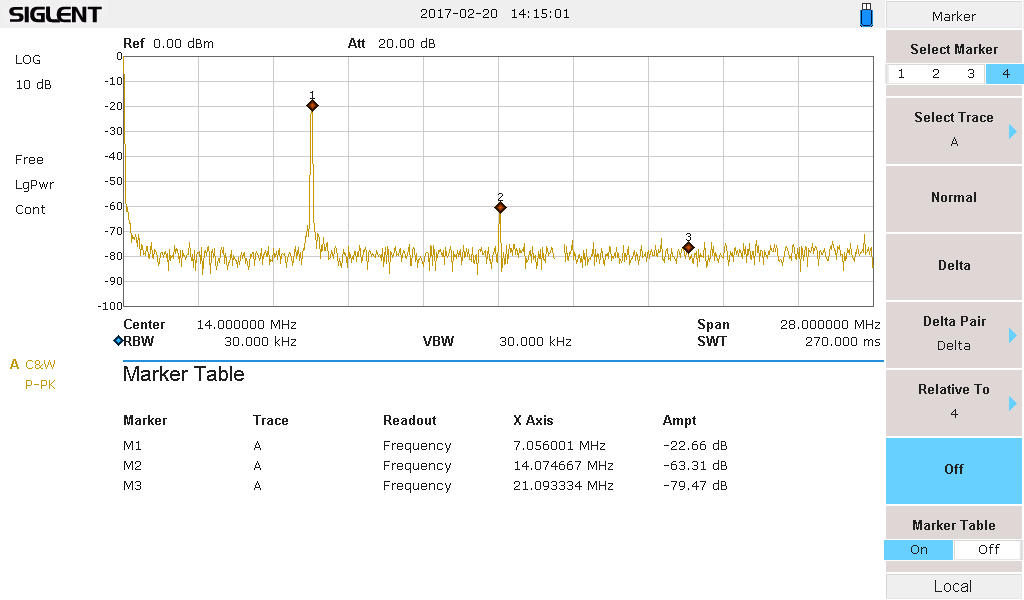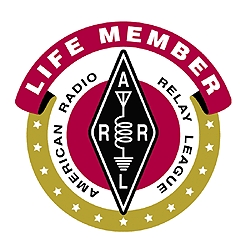NCRC had several reasons for building the Pixie as a club project, and getting it on the air is probably at the bottom of the list. Fixing flaws in the Pixie design provides learning opportunities. But by the time you fix the Pixie, would you be better off building something else? There is no clear answer to that question, but there is a “something else” that might fit the bill.
Enter the “DC40B” Direct Conversion 40-meter QRP transceiver. Notably different from the Pixie in that it produces between 2 and 3 watts of clean transmit power right off the bat, and has a substantially better receiver. It also has a real sidetone and a keyer chip built-in. All that comes at a price. It sells for about $40, and is probably 3x the complexity of the original Pixie (about 2.5x the component count, plus 5 toroids to be wound).
Willy W1LY built the DC40B and we measured the transmit spectra today. The fundamental was at 2.75 watts. The 3rd harmonic, was -65 dBc, more than meeting the FCC requirement.
The user needs to provide external jacks for the headphones & keyer, plus antenna and power connectors. It is suggested that a panel mounted cap could be used to provide some degree of RIT — otherwise a PCB mounted trimmer is used to set the desired CW offset on receive.

